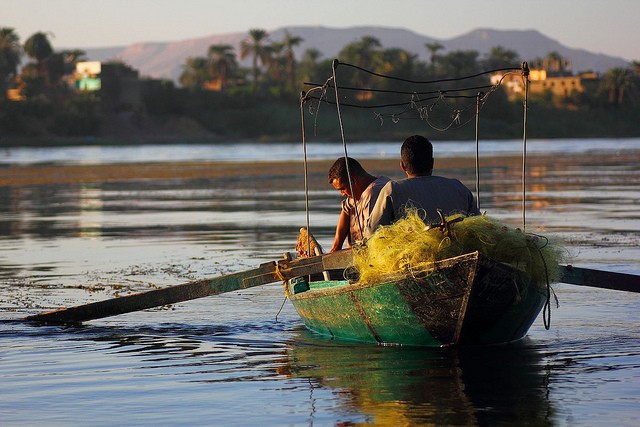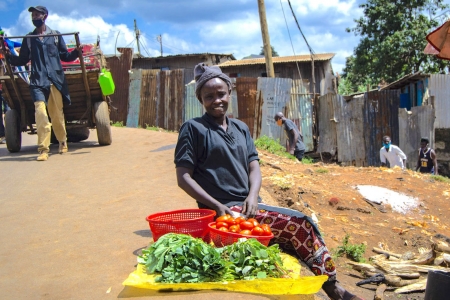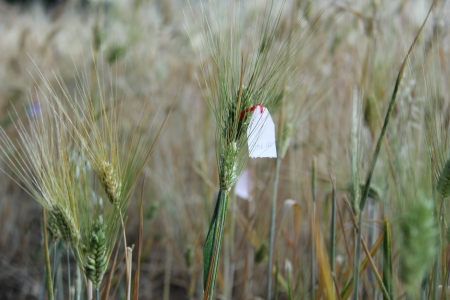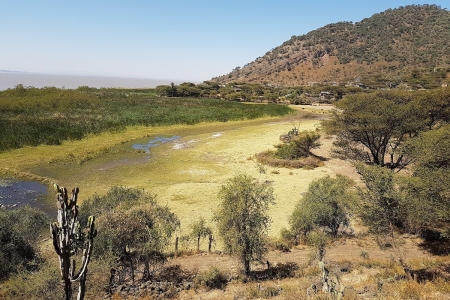If tomorrow all of East Africa’s wetlands disappeared, what costs would governments incur? While it is nearly impossible to place a quantitative value on wetlands, a new project is exploring methods of valuation of wetlands in the Nile Basin.
 Fishermen in Luxor, Egypt. Photo: EmsiProduction on Flickr
Fishermen in Luxor, Egypt. Photo: EmsiProduction on FlickrWe can start with a more simple question, explains Kenneth Irvine of UNESCO-IHE. “What is the value of a fish? We can easily put a price on a fish. If we follow a fish through the value chain we can get a pretty good idea of its net economic value. But that doesn’t reflect it’s full value to the ecosystem and society.” Its value could extend to its role in the ecosystem, the nutritional value to its consumers, or even it’s cultural significance; perhaps this fish is essential for certain traditional meals. Can we put a price on that?
Evaluating tradeoffs
If fish are just one component of many in a wetland ecosystem, the intricate nature of determining the value of a wetland becomes overwhelmingly clear. The Nile Ecosystems Valuation for wise-Use Project (Nile Eco-VWU), which recently kicked off in Cairo, Egypt, looks at how to put a value, i.e. a price, on wetland services in the Nile Basin.
Competing demands for agricultural land, infrastructural development, and rapid population growth all put pressure on East Africa’s wetland ecosystems. Wetlands provide a number of vital services including flood mitigation, natural filtration of wastewater, a breeding ground for fish, and a diverse range of other species.
Researchers in the Nile Eco-VWU project anticipate that economic valuation of wetlands will be a valuable tool for policy makers. For example, Dr. Irvine sites that the Muthurajawela Wetland in Sri Lanka has a total value of 7.5 million USD per year in the services it provides.
This type of information is valuable in evaluating tradeoffs when governments face offers from companies to development wetland areas.
“If you’re telling a policy maker that the Tana delta is a biodiversity hotspot, the question is, so what?” says Bernard Opaa of the National Environment Management Authority of Kenya. Putting a price on nature gives policy makers a much clearer idea of the tradeoffs they face with other offers for development of the land.
Putting a price on nature gives policy makers a much clearer idea of the tradeoffs they face with other offers for development of the land.
Opaa warns, “You can end up talking to yourself. If you do not know the language for specific and targeted audiences, you’re likely to fail in achieving the much needed influence in project outcomes.” But when approaching a policy maker with figures in the range of millions or billions of USD, it’s possible that ecologists just might be listened to.
The project identifies goals far beyond just the valuation of these rich lands. With plans to coordinate with local NGOs and civil society organizations, the Nile Eco-VWU project will explore the difference in the values that men and women place on wetland ecosystems, with a goal of determining how men and women can play a role in managing wetlands more sustainably, especially in an environment that is constantly changing, both physically and politically.
Evidence to yield change
“I used to catch 3 types of fish; now they are disappearing,” said Mr. Magdy Abdallah from the Unity of Fishermen in Brullus Lake. Mr. Abdallah was invited to the workshop as one of the stakeholders in the Egyptian wetland that will be included in this project.
In the Burullus Lake region of Egypt, pollution from surrounding industries both depleted the fish supply and compromised water quality. Additionally, rapid population growth has increased the amount of domestic sewage that makes its way to the lakes.
“I have told policy makers that the pollution in the lakes is affecting my fish yield. But I need to show results of studies done by scholars and scientists so that I can make a point,” said Abdallah.
This project may be able to provide the data needed. As Dr. Zoltan Vekerdy of ITC-TWENTE University notes, “the build up of pollution in the delta is causing it to be devalued. The potential value of the wetland could be much higher if we aren’t raising fish in sewage.”
It’s safe to say that if East Africa’s wetlands disappeared, governments would be looking at costs in the millions of USD a year, perhaps even higher.
The project is part of the Nile Basin and East Africa program of the CGIAR Research Program on Water, Land and Ecosystems. For more information about the project, click here.












Comments
I would put the value of the materials that communities nearby wetlands use to do handcrafts as their livelihoods, as well as the natural grass that livestock farmers use to feed the cattle in the dry season in El Salvador.